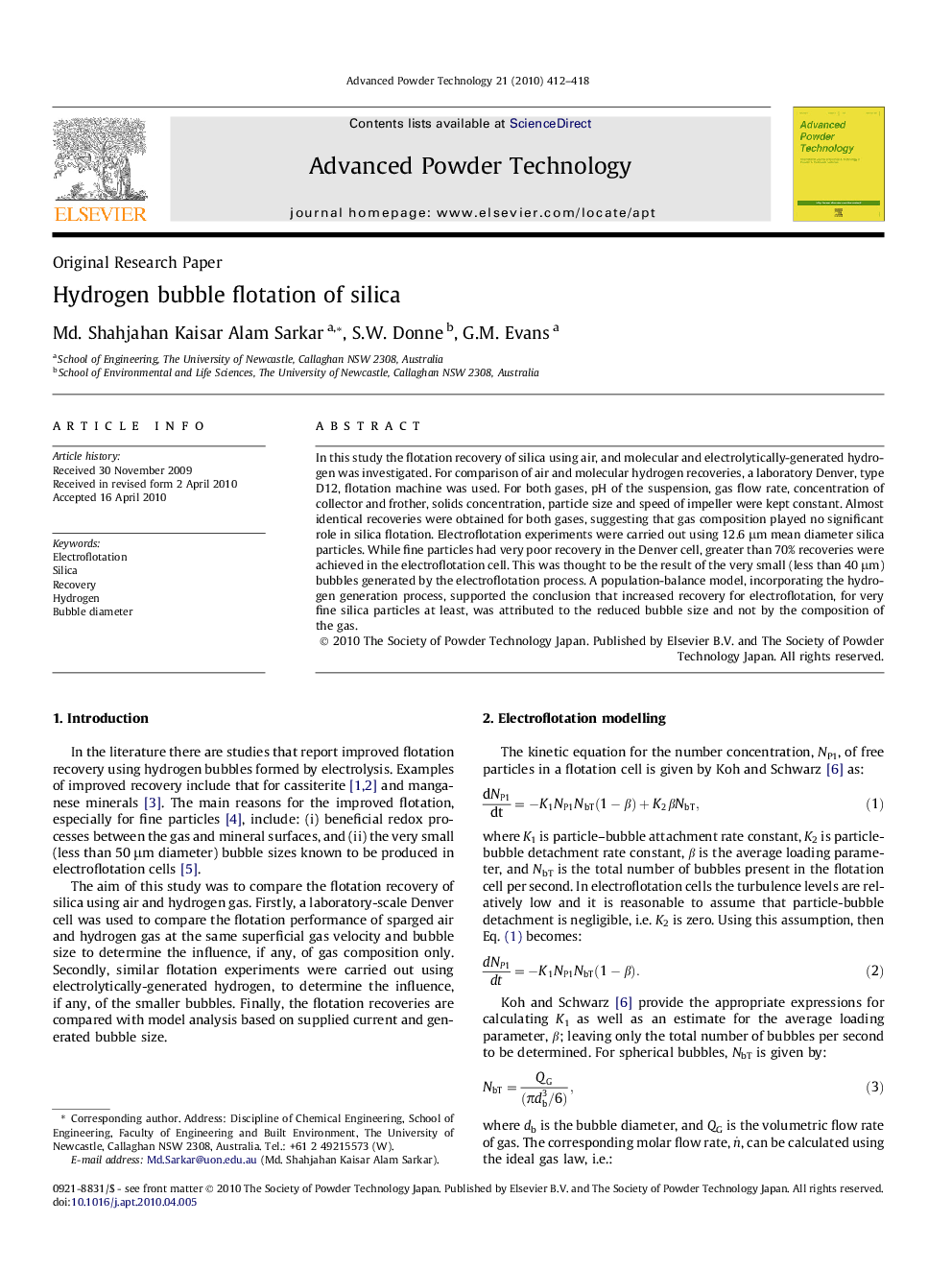| Article ID | Journal | Published Year | Pages | File Type |
|---|---|---|---|---|
| 144728 | Advanced Powder Technology | 2010 | 7 Pages |
In this study the flotation recovery of silica using air, and molecular and electrolytically-generated hydrogen was investigated. For comparison of air and molecular hydrogen recoveries, a laboratory Denver, type D12, flotation machine was used. For both gases, pH of the suspension, gas flow rate, concentration of collector and frother, solids concentration, particle size and speed of impeller were kept constant. Almost identical recoveries were obtained for both gases, suggesting that gas composition played no significant role in silica flotation. Electroflotation experiments were carried out using 12.6 μm mean diameter silica particles. While fine particles had very poor recovery in the Denver cell, greater than 70% recoveries were achieved in the electroflotation cell. This was thought to be the result of the very small (less than 40 μm) bubbles generated by the electroflotation process. A population-balance model, incorporating the hydrogen generation process, supported the conclusion that increased recovery for electroflotation, for very fine silica particles at least, was attributed to the reduced bubble size and not by the composition of the gas.
